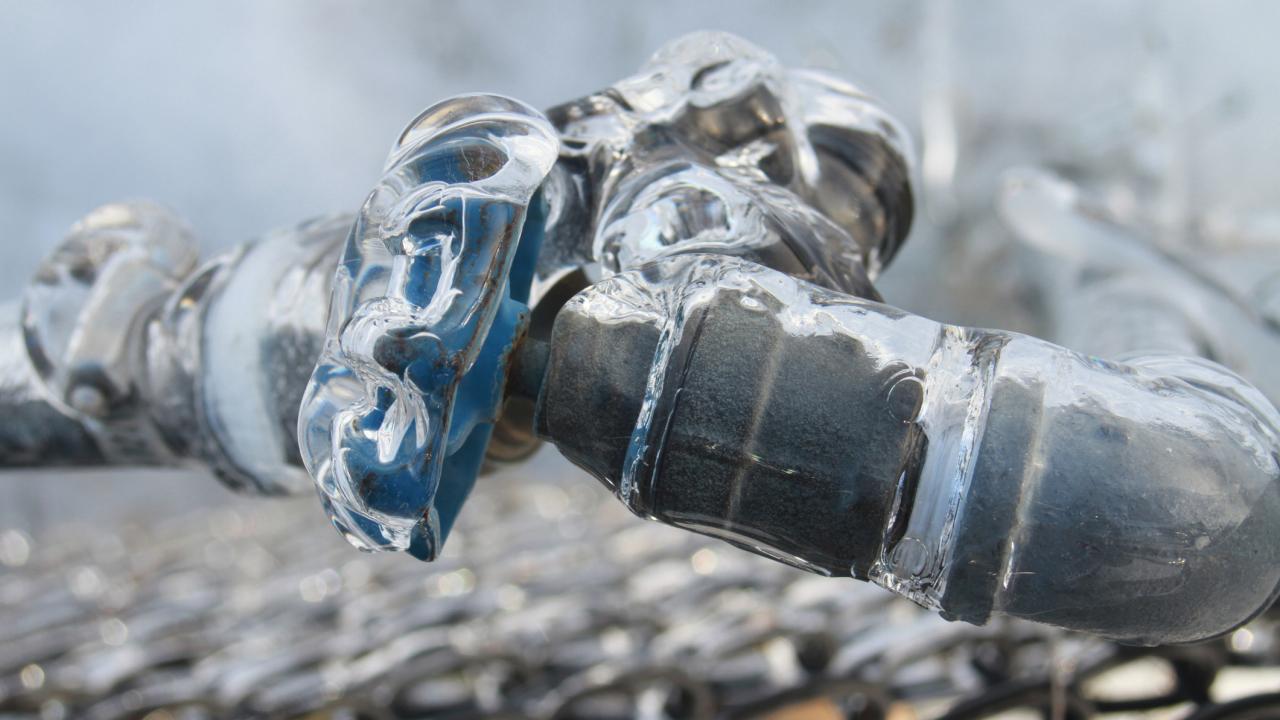Essential Tips for Avoiding Frozen Pipes in Winter Conditions
Essential Tips for Avoiding Frozen Pipes in Winter Conditions
Blog Article
We have encountered this great article pertaining to Winter Plumbing Precautions: Preventing Frozen Pipes listed below on the internet and felt it made good sense to discuss it with you on my blog.

Winter can ruin your pipes, particularly by freezing pipelines. Right here's just how to stop it from occurring and what to do if it does.
Introduction
As temperatures decline, the threat of icy pipelines rises, possibly bring about pricey repairs and water damage. Understanding how to prevent icy pipes is important for home owners in cold climates.
Prevention Tips
Shielding prone pipelines
Wrap pipelines in insulation sleeves or use warmth tape to shield them from freezing temperatures. Focus on pipelines in unheated or exterior areas of the home.
Heating techniques
Maintain indoor areas sufficiently heated, specifically locations with plumbing. Open cabinet doors to enable warm air to flow around pipes under sinks.
Just how to identify frozen pipelines
Look for lowered water flow from faucets, uncommon smells or noises from pipelines, and visible frost on revealed pipelines.
Long-Term Solutions
Architectural changes
Think about rerouting pipelines away from exterior wall surfaces or unheated locations. Include extra insulation to attic rooms, cellars, and crawl spaces.
Upgrading insulation
Purchase top quality insulation for pipelines, attics, and walls. Appropriate insulation helps preserve consistent temperatures and decreases the threat of icy pipes.
Securing Exterior Pipes
Yard hoses and exterior faucets
Separate and drain garden tubes before wintertime. Mount frost-proof faucets or cover exterior faucets with shielded caps.
Understanding Icy Pipelines
What triggers pipes to freeze?
Pipelines ice up when exposed to temperature levels listed below 32 ° F (0 ° C) for extended durations. As water inside the pipes ices up, it expands, taxing the pipeline wall surfaces and possibly creating them to rupture.
Risks and problems
Icy pipes can bring about water system disruptions, residential property damage, and pricey fixings. Ruptured pipelines can flooding homes and cause considerable architectural damages.
Indications of Frozen Piping
Determining frozen pipelines early can avoid them from rupturing.
What to Do If Your Pipelines Freeze
Immediate actions to take
If you presume frozen pipelines, maintain faucets available to alleviate stress as the ice melts. Utilize a hairdryer or towels soaked in warm water to thaw pipelines gradually.
Conclusion
Protecting against frozen pipes calls for positive actions and fast actions. By comprehending the reasons, signs, and preventive measures, house owners can protect their plumbing throughout cold weather.
5 Ways to Prevent Frozen Pipes
Drain Outdoor Faucets and Disconnect Hoses
First, close the shut-off valve that controls the flow of water in the pipe to your outdoor faucet. Then, head outside to disconnect and drain your hose and open the outdoor faucet to allow the water to completely drain out of the line. Turn off the faucet when done. Finally, head back to the shut-off valve and drain the remaining water inside the pipe into a bucket or container. Additionally, if you have a home irrigation system, you should consider hiring an expert to clear the system of water each year.
Insulate Pipes
One of the best and most cost-effective methods for preventing frozen water pipes is to wrap your pipes with insulation. This is especially important for areas in your home that aren’t exposed to heat, such as an attic. We suggest using foam sleeves, which can typically be found at your local hardware store.
Keep Heat Running at 65
Your pipes are located inside your walls, and the temperature there is much colder than the rest of the house. To prevent your pipes from freezing, The Insurance Information Institute suggests that you keep your home heated to at least 65 degrees, even when traveling. You may want to invest in smart devices that can keep an eye on the temperature in your home while you’re away.
Leave Water Dripping
Moving water — even a small trickle — can prevent ice from forming inside your pipes. When freezing temps are imminent, start a drip of water from all faucets that serve exposed pipes. Leaving a few faucets running will also help relieve pressure inside the pipes and help prevent a rupture if the water inside freezes.
Open Cupboard Doors
Warm your kitchen and bathroom pipes by opening cupboards and vanities. You should also leave your interior doors ajar to help warm air circulate evenly throughout your home.

We were guided to that editorial on How to prepare your home plumbing for winter weather through an acquaintance on our other domain. Sharing is caring. Helping people is fun. Thank you for taking the time to read it.
Click Here Report this page